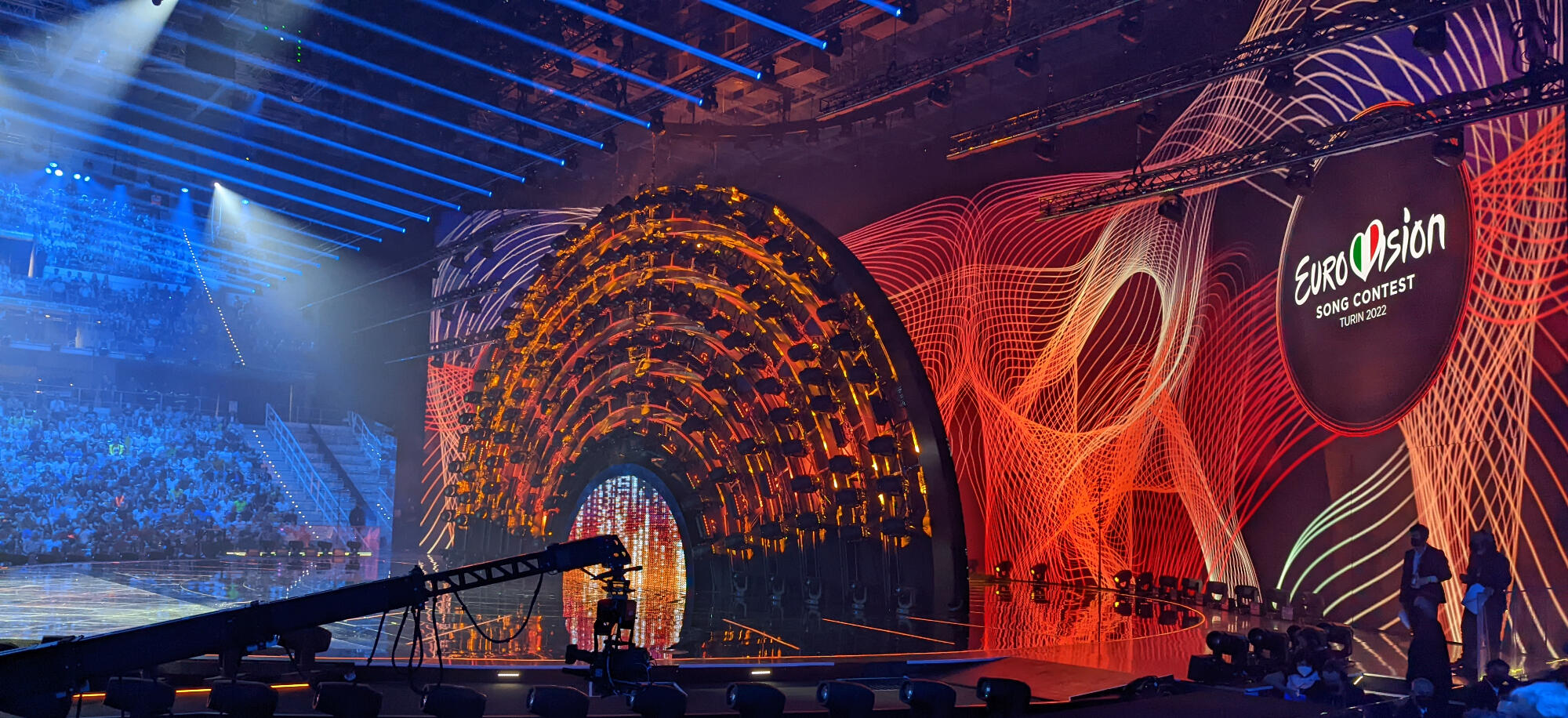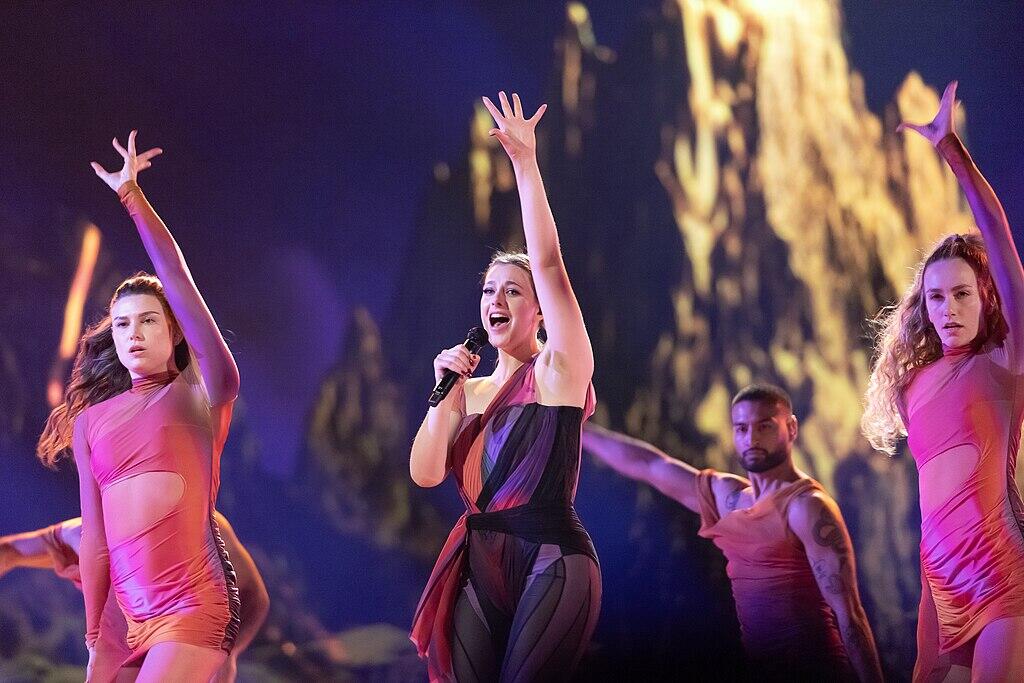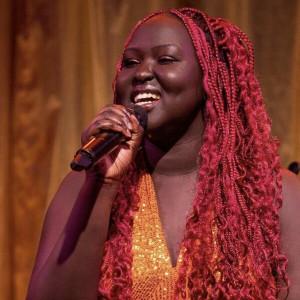Eurovision is one of the largest musical competitions in the world, rallying viewers from all over Europe and beyond each year. In every contest, musical artists try to provide memorable performances that capture global attention, even if they don't win. It's an exciting cultural phenomenon that takes the world by storm every Spring. Find out more about Eurovision below!

Eurovision: A Timeline of Events
Check out what year did Eurovision start in the grand scheme of events leading up to its creation. Plus, see some of the major milestones of the contest since its first year!
1950
The European Broadcasting Union (EBU) was formed
A conference hosted by BBC aimed to establish inter-country television broadcasting.
1951
The term "Eurovision" is coined
It is first mentioned by British journalist George Campey in the "London Evening Standard" paper.
1953
The Coronation of Queen Elizabeth II
The EBU broadcasted the event in the UK as well as France, Belgium, the Netherlands, and Germany. The event also helped push more people to purchase their own television sets.
1954
More international events are broadcast
The "European Television Season" brings live events from all over Europe to TV sets across the network of countries.
1955
Idea Pitch for the "European Grand Prix" (later called Eurovision)
Italian broadcaster Sergio Pugliese proposes a European song contest as a big feature for the network. The idea was approved and work began to organise the event.
24 May 1956
The first Eurovision Song Contest airs
Held in Switzerland, Belgium, France, West Germany, Italy, Luxembourg, the Netherlands and Switzerland all submitted two songs for consideration. The one-day event saw Swiss singer Lys Assia as the winner with her song "Refrain."
3 March 1957
Second Annual Eurovision Contest
Austria, Denmark and the United Kingdom joined in the competition, held in West Germany. This year, and all years since, each country is permitted only one song entry.
1968
Colour television
Eurovision premieres in colour for the first time.
1975
"12-Points" system introduced
The 12, 10, 8-1 point system was introduced.
1998
Televoting was first introduced
Before this time, juries made up of representatives from each country were solely responsible for voting for the performances. In 1998, fans were able to phone their votes in from home, with juries representing only those communities with poor phone service.
2003
SMS voting introduced
Now, fans could vote via text message.
2004
A second night is added to the competition
The one-day competition was expanded into two nights: a semi-final and a Grand Final.
2008
A third night is added
Two nights was such a success that the standard format has been expanded to three nights of performances over the course of about a week.
2020
The year without a Eurovision
Unfortunately, Eurovision had to be cancelled due to the pandemic.
2024
Luxembourg returns
Luxembourg participated from 1956 to 1993 (except 1959), winning first place 5 times in that time period. After being relegated from the competition after a bad performance in 1993, the country declined to return for 30 years, until the 2024 competition.

A Summary of Contemporary Eurovision
According to Guinness World Records, the Eurovision Singing Contest (ESC) is the longest-running, annual, televised, international music competition. It is also one of the longest-running programs in television history and ranks among the world's top non-sports viewing events.
Over its nearly 70-year history, Eurovision has welcomed acts from 52 countries. In 2008 and 2011, an astounding 43 countries sent their singing talents to the Eurovision stage.
Take a moment to marvel over the challenges such an expanded spectacle poses. Broadcasters plan their airtime down to the second. They must factor in technical challenges, and leave enough time for sponsored adverts.
Staging Eurovision brings its own headaches. Set and artist changes, camera angles, and other production particulars. Writing scripts, making timely announcements, and planning sufficient intervals to tally the votes. That, of course, leads us to the meticulous coordination of collecting votes from around the world.
In short: Eurovision is a remarkable feat of unity, diversity, and artistry. It's a stunning achievement of engineering, technology, and planning. And to think it happens every year!
As we anticipate Eurovision 2025, let's peer back in time, to Eurovision's beginnings. We'll discover how this brilliant concept became the celebrated event we know today and the singers who made it so. Finally, we'll highlight some of Eurovision's top acts, through the years.


Eurovision History: How It Started
Life in Europe was not easy in 1956. Post-war rebuilding was ongoing and the economy was in bad shape. These times saw a lot of political tension, too. Still, there was a lot to be excited about.
Television had been around for about 30 years by then, but owning one was expensive, especially at a time when people didn't have money to burn. Besides, the medium didn't offer much entertainment.
Portable televisions hit the market in a big way, starting in 1956. They were more affordable and the picture quality was better than earlier-model appliances. Fans of this technology still didn't have much to watch, but that was set to change.
The European Broadcasting Union (EBU) was scouting around for ideas to fill its airtime. Those executives wanted to produce a live television programme; one that would broadcast in real-time, across its network.
Queen Elizabeth II's coronation (1953) proved that area-wide broadcasting could work.
Now, it was only a matter of finding suitable programming.

Looking to improve your own vocal talents? Find an amazing singing teacher for singing lessons Melbourne here on Superprof!
The EBU, owners of the Eurovision Transmission Network, jumped at the idea of a song competition. Such contests were common at the local level across Europe. It should be easy to recreate the format for a television audience.
A singing contest would be ideal since few households had television but many had radios. Simul-casting the competition would bring an even larger audience share.
A British journalist coined the term "Eurovision" in 1951, when describing a BBC programme broadcast on Dutch Television. At the time, he was simply referring to international European television broadcasts.
Once they worked out all the technical and administrative details, the EBU advertised the competition. The rules were simple. Any nation with a European broadcasting licence could submit two songs, which had to be the artist's own work. A judging panel would rate the performances and deliver their verdict on the venue's stage.
As the EBU sought input from interested countries, the Swiss delegation offered to host the event. Thus, on May 24, 1956, singers from seven nations gathered in Lugano, Switzerland, for the first Eurovision Song Contest. This event marked one of the earliest attempts to broadcast a live televised spectacle to a broad international audience.
The countries that participated were:
- The Netherlands
- Switzerland
- Belgium
- Germany
- France
- Luxembourg
- Italy
The first Eurovision competition was held on 24 May 1956 in Lugano, Switzerland. It featured acts from seven countries.
The show was an instant hit, so the EBU immediately started planning next year's contest. Last year's winner Switzerland declined to host for a second time; the German broadcasting organisation ARD stepped up. Despite that hiccup, the Eurovision Song Contest promoted the tradition of the winning nation being next year's host. That tradition carries on, still today.
This brief guide to Eurovision's genesis sets the stage for all the music magic that comes next. Take a moment to enjoy Eurovision's first-ever winning song. And then, discover how this song contest has changed over the years.
The Evolution of Eurovision
The first show was a hit but future spectacles wouldn't be without problems. For one, the growing roster of participating countries challenged broadcasters' planning. By the 1960s, up to 18 countries were submitting entries. This table shows all new entrants in the 60s.
| Year | Country | Artist | Song | Rank |
|---|---|---|---|---|
| 1960 | Norway | Nora Brockstedt | Voi-voi | 4th place |
| 1961 | Finland | Laila Kinnunen | Valoa ikkunassa | 10th place |
| 1961 | Spain | Conchita Bautista | Estando contigo | 9th place |
| 1961 | Yugoslavia | Ljiljana Petrović | Neke davne zvezde | 8th place |
| 1964 | Portugal | António Calvário | Oração | 13th place |
| 1965 | Ireland | Butch Moore | I'm Walking the Streets in the Rain | 6th place |
The two-song-per-artist format was quickly abandoned. Indeed, the first-ever broadcast was the only instance of such. Colour broadcasts began in 1968, which compelled more dramatic backdrops and costumes. To say nothing of the technical equipment - the lights, cameras and more, needed to render the contest a visual feast.
Countries outside the European broadcasting region wanted to participate, too. Soon, musical talent from West Asia and Northern Africa were making their way to the Eurovision stage. Israel made its debut in 1973; Tunisia took the stage in 1977.
By the 90s' end, as many as 25 counties were taking part in the contest (new entrants are listed in the table below). Now, not only was scheduling a nightmare, but the whole voting system needed overhauling.
| Year | Country | Singer | Song | Rank |
|---|---|---|---|---|
| 1993 | Bosnia and Herzegovenia | Fazla | Sva bol svijeta | 16th place |
| 1993 | Estonia | failed to qualify | ||
| 1993 | Hungary | failed to qualify | ||
| 1993 | Romania | failed to qualfy | ||
| 1993 | Slovenia | 1X Band | Tih deževen dan | 22nd place |
| 1993 | Slovakia | failed to qualify | ||
| 1993 | Croatia | Put | Don't Ever Cry | 15th place |
| 1994 | Lithuania | Ovidijus Vyšniauskas | Lopšinė mylimai | last place |
| 1994 | Poland | Edyta Górniak | To nie ja! | 2nd place |
| 1994 | Russia | Youddiph | Vechny strannik | 9th place |
| 1996 | Macedonia | failed to qualify |
Eurovision introduced televoting in 1997. For the first time, the viewing audience voted for their favourite singers. That year, five countries participated in televoting to test the system. The following year, televoting was open to every participating country.
At this point, Eurovision voting grew more complex. Some countries didn't have up-to-date telephone systems, particularly not those in Eastern Europe. Also, the planners believed it wasn't a good idea to abandon the professional judging panels.
Using both voting and professional panels became the solution. For countries with technology too unreliable to submit televotes, the judges' votes would carry. By the new millennium, nations' broadcasters could decide for themselves whether to rely on audience votes, judges' decisions or a 50/50 blend of both.
Because of the influx of participants and voters, in 1980, Eurovision introduced the 12, 10, 8-1 voting system.
The judging panel assigns their top pick 12 points (a Douze), and the runner-up receives 10 points. The rest of the songs are ranked, 8-1 in descending order.
Eurovision Australia Debut
By the early 2000s, the Eurovision Song Contest had become a massive undertaking. So-called 'East Bloc' countries had long been holding their own singing competition, called "Intervision." Now free to join the larger contest, they leapt at the chance. These 15 countries became Eurovision participants during this millennium's first decade.
| Year | Country | Singer | Song | Rank |
|---|---|---|---|---|
| 2000 | Latvia | Brainstorm | My Star | 3rd place |
| 2003 | Ukraine | Olexandr | Hasta la vista | 14th place |
| 2004 | Serbia and Montenegro | Željko Joksimović and Ad-Hoc Orchestra | Lane moje | 2nd place |
| 2004 | Andorra | failed to qualify | ||
| 2004 | Albania | Anjeza Shahini | The Image of You | 7th place |
| 2004 | Belarus | failed to qualify | ||
| 2005 | Bulgaria | failed to qualify | ||
| 2005 | Moldova | Zdob și Zdub | Boonika bate doba | 2nd place |
| 2006 | Armenia | André | Without Your Love | 6th place |
| 2007 | Czech Republic | failed to qualify | ||
| 2007 | Georgia | Sopho | Visionary Dream | 8th place |
| 2007 | Montenegro | failed to qualify | ||
| 2007 | Serbia | Marija Šerifović | Molitva | 1st place |
| 2008 | San Marino | failed to qualify |
To accommodate every act, the 2004 contest introduced the semi-final round. This made Eurovision a multi-programme event. Four years later, the show added its second semi-final contest, and another broadcast. That format persists today.
Technological advances expanded voting options, so the Eurovision producers began welcoming audience votes by text message and online. Keeping up with tech developments, Eurovision launched a smartphone application to make audience participation easier.
However, the participation rules remained inflexible. Australians have been avid Eurovision fans since 1983, when SBS first aired the contest. We were far out of European broadcast range, so we could not get the needed licence to participate. And general audience voting was still far from being possible.
Our loyal fandom - and not unsubstantial begging - saw Australia invited to Eurovision in 2015. That was the contest's 60th anniversary; our participation should have been a one-off. And it only came about because Denmark, that year's host country, invited us. But, Australia has been invited back every year since.
Eurovision Winners: Who's Won the Most?
One might think, with this long Eurovision history, that several musical acts would win more than once. In fact, such has only happened twice. Swedish singer Loreen claimed the top prize in 2012 with "Euphoria". She returned in 2023, wowing audiences with "Tattoo".
The Irish singer, Johnny Logan, is the only other act to win Eurovision more than once. In 1980, he sang "What's Another Year" and then returned in 1987, to perform "Hold Me Now".
Coincidentally, Sweden and Ireland tie for the most Eurovision wins, with seven each. France, the Netherlands, the United Kingdom and Luxembourg all tie for second place, with each having won the contest five times.
Luxembourg's record is all the more remarkable because they haven't participated since 1995. For the first time in nearly 30 years, a Luxembourger graced the Eurovision stage in 2024. It was a welcome return for a nation that delivered one of Eurovision's most loved songs, Poupée de Cire by France Gall.
Gall's performance paved the way for other pop acts, most notably the legendary Swedish group Abba, whose "Waterloo" claimed the top title in 1974.
Incidentally, Waterloo was just one of the top Eurovision songs that Julia Zemiro featured in her series of Australian 'begging' videos. Eurovision hosts, good-naturedly mocking our desire to join, appreciated our constant assays. We, in turn, appreciate the workaround the Eurovision executives found, that finally allows our participation.

Eurovision continues to be the biggest musical cultural phenomenon in the world! What will the 2025 competition have in store?
You can learn how to unleash your own vocal talents with singing lessons from an amazing vocal coach on Superprof!















